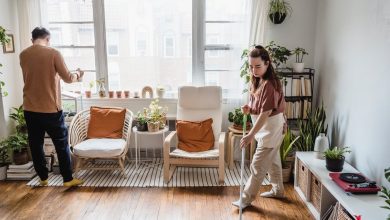What Cash Flow Is And It’s Importance In a Business
The cash flow is vital to any business, and not having enough of it is the reason why small companies fail. Even if you’re selling a lot of products, when you do not have enough cash available in the bank, your company will not be capable of paying its bills and keep operating.
This is why it’s crucial for businesses to be aware of the fundamentals of cash flows and forecasting. We’ll go over everything in this article to bring you familiar with all things related to cash flow:
- Cash flow definition
- Calculating cash flow
- The difference between profits and cash
- How can you evaluate your statement of cash flows
- Positive cash flow
- Negative cash flow
- The rate of cash burn and runway
5. Why forecasting cash flow is crucial
6. How do you forecast cash flow
- The method that is direct
- The indirect method
- Cash flow forecasting
7. How can you increase your cash flow
8. Further reading
Cash Flow Definition
Cash flow is the measure of how much money moves between and within your company over a certain time.
Businesses earn cash through sales, profits on investments, as well as loans and investments. That’s money coming into the business.
Then, businesses pay for products and services, in addition to tax, utilities as well as loan payments, and other charges. This is the cash that flows out.
Cash flow is assessed by comparing how much money flows into a company over a specific time as compared to the amount of money that leaves that company during the same time. In general, cash flow is measured over the time period of a month, or quarter.
How do you calculate cash flow?
The simplest method of calculating the flow of cash is
CASH RECEIVED – CASH SPENT = NET CASH FLOW
When your cash flows net is positive, your company can be cash-flow positive while having money in your bank.
When your cash flow net is negative, then your business is cash flow negative, and you’re ending your month without more cash than what you began with.
What is the difference between cash and Profit?
You may be surprised to learn that it is possible for your company to be profitable and be short of cash. It may seem a bit odd at first, but that’s because profits and cash are two different things. Here’s why.
Profits may include sales you’ve made but haven’t paid for.
Cash however is the amount of cash you hold in your account at the bank. It’s the liquidity of your company, and in essence, when you’re unable to utilize it to pay your expenses, it’s not cash.
For instance, if you’re selling a lot, however, you invoice your customers and they pay the invoice “net 30,” or within 30 days after receipt of the bill, then you might have a lot of money in paper, but there’s not much money in your bank account due to the fact that the customers haven’t yet paid you yet. These sales will appear in your earnings statement.
If the money that your customers have owed you hasn’t yet made it into your account at the bank the money won’t be reflected as cash flows report at this point. The money isn’t available to your company as of now. It’s still in your clients and their possessions although you’ve paid them for them. Keep track of the amount your customers owe to you in accounts receivable.
However, you’ll only be able to pay for your expenses with real cash in the bank account. If you don’t have cash on hand it will be difficult to meet orders, pay your employees, and pay rent. This is that’s why maintaining track of cash flow crucial. To ensure that your business is able to stay afloat it is essential to keep an understanding of what is coming in and out of your company on a regular basis. You must also take every step you can to keep your cash flow in check.
If you’re interested in learning more, look up our more thorough explanation of the differences between profits and cash flow.
How do you analyze the cash flow statement?
In analyzing your cash flow report, you’re analyzing the amount of cash in your account at the start of each month, in relation to the cash you have at the close of each month. You may also examine your cash flow across different time intervals – like quarterly, for instance – however, a good rule of practice is to review the flow of cash on an ongoing basis to be able to identify any changes in the financial health of your company.
To get a visual illustration of how this process works in an organization, download this cash flow example in either a PDF or an Excel sheet.
If you are conducting an analysis of cash flow you’ll need to ensure that you know the following terms.
Positive cash flow
Positive cash flow is the process of being able to have more liquid cash in the bank at the end of a certain time as compared to the amount available at the time of its beginning.
Let’s suppose you had $1000 cash at the start of each month. You paid $500 for expenses and bills Your customers have paid you $2,000 in exchange for the services you provided. It’s good news that your cash flow is healthy and you earned $2,500 in the month.
If you’re experiencing positive trends in funds, you’ll be much easier to:
Pay your bills on time: Cash flow is a positive factor that ensures that employees receive paychecks on every pay period. Additionally, it provides decision-makers with the cash they need to pay creditors, suppliers as well as the government.
Make investments in new opportunities: The business environment is dynamic. If cash is readily available, business owners are able to invest in opportunities that could be created at any point in time.
Stomach the unpredictability The unpredictable: Cash access is a good thing when equipment fails or clients fail to pay their bills in time or when new regulations from the government are in place companies can be able to survive.
Negative cash flow
Negative cash flow occurs when cash is leaving the company than it is coming into the business. If there is a negative cash flow, it means that the quantity of cash that is in your bank account is declining. This may not be an issue if your business has ample cash in its bank. However, it could mean that your company could end up with no money in the event that it does not become cash flow positive in the near future.
Let’s suppose you had $1,000 in your bank account at the start of your month. You paid $1,500 for costs and bills, but even though you put in a lot of working and invoiced customers for the amount of $3,000 in services they only gave you $200. Still waiting for the remainder of the payments to arrive. The cash flow is low at -$300 per month.
If you do not have reserves the rent check could bounce. If you’ve got an existing credit line that you have already set up, you could use it to cover a portion of your expenses. Perhaps you planned your cash flow and you were aware that you would be in a deficit that month, and you came up with an arrangement to pay for the costs.
A month of cash flow that is negative isn’t going to be a disaster for your business. However, when you begin to notice a pattern, and you don’t take action to stop it (or when you’re surprised since you’ve not had the habit of tracking the flow of cash) this is when your company is in danger.
Cash Burn Rate and Runway
Startups and businesses that are new generally are in a financial bind when they’re just beginning. There are a lot of bills to be paid while they’re getting their business up and running and they’re not making many sales yet. When the sales begin to arrive hopefully, cash will begin to flow into the company instead of flowing out. This is the reason why businesses that are new frequently require loans and investments to begin their journey. They require cash at the bank to offset all negative cash flow in the beginning days of business.
At first, at a new job, you must track the Cash Burn Rate, which is basically your negative cash flow figure which is the amount that you’re “burning” each month. Then, you can calculate using that number the amount of cash you’ve left, which can be your “runway.” Read our comprehensive explanation of the cash burn rate and runway to find out more about how to determine, quantify and modify these numbers.
Negative cash flow could be a problem when a company decides to invest in a new venture. It could be a gamble that the investment in a new business opportunity today will yield dividends later on. This investment could result in an unsustainable cash flow over a period of time therefore it’s essential to keep a check on cash and have an accurate cash flow forecast to determine whether your company has been on track to remain on the positive side of the equation.
Why forecasting cash flow is vital
It is important to keep track of your cash flow history at least every month so that you can begin to see patterns in the actual events when it comes to cash inflows and outflows.
It’s not only about assessing the past and the present flow of cash but forecasting it can help you predict what time your business may be short of cash in the near future. It is then possible to prepare for the future and create an account or look for other loans and investments to cover the time in the event that you’ll need an extra amount of cash.
It’s much simpler to seek help from a financial institution or bank before you’re in an emergency situation and aren’t certain you’ll be able to pay the costs. In the event that you hold off until you’re in a crisis to act the lenders might view that you’re too much of a risk and the request down.
The cash flow forecast will assist you in planning the most suitable time to make a major purchase, such as a new piece of equipment, or a corporate vehicle.
Remember to factor in the unpredictability, however. The business owners aren’t able to predict the future, particularly with regard to unexpected expenses that they may be faced with (e.g. the truck that breaks down too early and requires replacement or a data breach that results in a compulsion increase in IT spending). Also, they can’t be sure whether their customers will pay their charges in time.
If you’re planning to forecast or review your cash flow statements for last month, be aware that having a buffer is good. You don’t want to end up in a situation in which you’ve allotted every cent up to the point that you’re unable to cover unexpected costs.
When you review your cash flow is considering risk and the impact that the unexpected cost will impact your cash reserves and ultimately, your capacity to be able to cover your expenses.
How can you predict your flow of money and construct an account of cash flow?
Cash flow projections are about anticipating your financial requirements in advance.
Unfortunately, however planning your cash flow can be a little more difficult when compared to forecasting your other business aspects, such as your expenses and sales. The cash flow statement incorporates the inputs of those projections for revenue, expenses projections, as well as the plans to purchase inventory in the event that your company has inventory in the bank.
Additionally, you must also predict the date your customers will pay you. Will everyone pay in time? or will some take longer to pay?
A tool such as LivePlan can drastically simplify cash flow forecasting however, you could also do it yourself using spreadsheets if you wish.
There are two approaches that you can employ to create the cash flow report that you can use: the direct method and an indirect approach. Although both will produce the same result and determine how much cash you’ll have in your bank in the near future they achieve that purpose by using different methods.
The method that is the most accurate for forecasting cash flow
The direct method offers an extremely clear picture of the way cash flows into and out of business. It is basically adding up all the cash your company has received from different sources and then subtracting the cash that’s paid out to vendors, suppliers or employees. This is the amount that you have either added or removed from your bank account throughout the month.
The indirect method for forecasting cash flow
The indirect method begins with your net earnings from the Profit and Loss statement and then you adjust this amount to reflect non-cash costs like depreciation. After that, you adjust the amount to reflect changes in inventory, accounts payable, and account payable.
It is popular for creating the historical cash flow statement because the necessary numbers can be easily derived through the accounting software. That makes this a well-known method of forecasting cash flow, though using the direct approach is typically more suitable for those who aren’t experienced with the complexities of accounting.
Check out our guide for a more in-depth explanation of the two ways of creating a cash flow report.
Predicting cash flow
If you’re planning cash flow with spreadsheets, I would recommend going with the method that is direct. It’s simpler and easier to follow.
In essence, you need to develop forecasts for when you’ll be receiving money from your customers and when you’ll be able to pay your bills.
It’s not necessary to anticipate every invoice or bill payment, however. Forecasting can help you make better decisions regarding your business, and therefore, making estimates for broader areas of your forecast is acceptable.
Check out our guide to forecasting cash flow for the full explanation of how to construct both a direct and indirect forecast.
How can you increase your cash flow?
In the event that your flow of cash is low or you’re trying to improve your cash flow overall There are plenty of possibilities available to you. Here’s a short list of what you can accomplish:
Your clients to pay your quicker
Make your payments at a slower pace
Buy less inventory and have less inventory in the warehouse
Follow-up on bad debts
Set up a line of credit or another type of business loan
In the event of a crisis, You may choose to use these techniques or take more drastic measures in case the global economy is negatively impacting your ability to generate money flow that’s positive.
For more in-depth guidance and details, please read our expert advice on troubleshooting to boost your cash flow as well as our guide to managing cash flow during an emergency.
Further reading to help you master cash flow
Cash flow is a huge issue and there are a lot of other resources you can discover useful. This is our top selection of the things you need to be to read following:
How to manage cash flow during a seasonally-based business
Businesses that are seasonal face special challenges to take into consideration, such as the different approaches to managing cash flow. Take a look at these methods to efficiently manage your cash flow, and avoid any unexpected seasonal events. Learn more.
Invoice factoring can help protect your cash flow
If you have customers or customers who are slow to pay and this causes problems with cash flow for your company. However, solutions such as spot and invoice factoring could be a protection to protect your cash flow from the possibility of future catastrophes. Learn more.
Tips to improve cash flow for your company
Effective cash flow management is vital to business success. If you’re struggling to manage your money flow, the following methods can help you improve. Learn more.
What can you do to help a line of credit for business
Every business faces difficulties with cash flow. Instead of trying to avoid them, actions such as a preemptive line credit can assist in keeping your business operating smoothly. Find out more.







